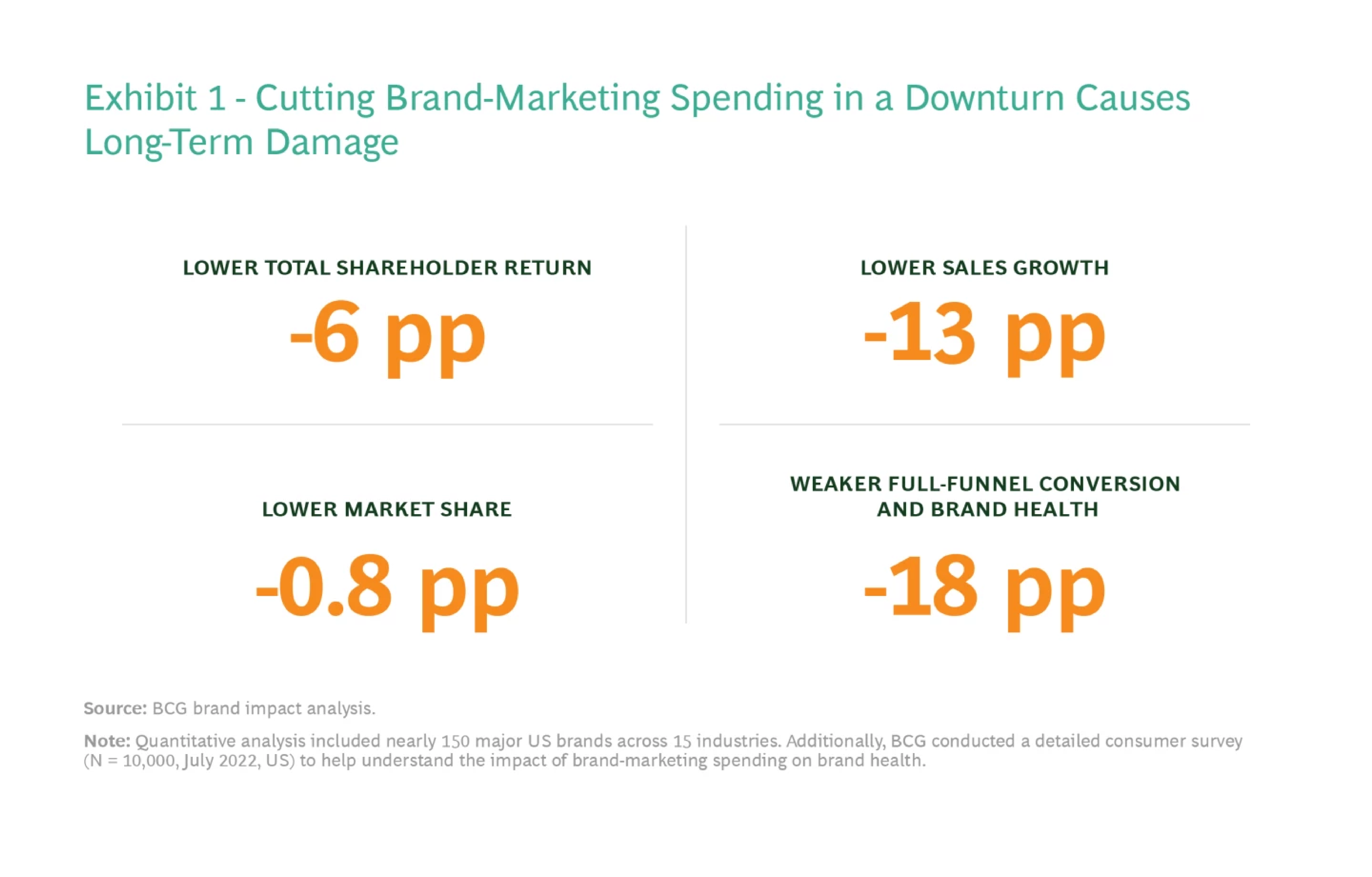Marketing in an economic downturn - 3 tips for success

Generally, economic downturns can lead to budget cuts and more conservative business strategies.
As companies seek to reduce costs, cutting marketing budgets might seem like a logical step … but isn’t a good idea!
There is clear evidence that maintaining or increasing your marketing budget during a downturn will deliver a competitive advantage in the long term.
That’s not surprising given the shorter-term advantages of investing in marketing at a time when others aren’t:
- With fewer competitors in the market, those who maintain an active marketing presence can gain a larger share of voice and capture consumer attention more effectively.
- Advertising costs tend to decrease in a downturn due to lower demand. This presents an opportunity for businesses to secure better advertising deals and maximize the impact of their marketing investments.
- Both the above help make it easier to maintain awareness during, and beyond, a downturn.
Here are three things that businesses can do to get the most out of their marketing in an economic downturn (no surprises as to what's first on the list!):
1. Continue to invest in marketing.
Evidence has consistently shown that investing in marketing during a downturn can be a powerful catalyst for growth and resilience.
Studies suggest that companies continuing to invest in marketing during a recession are more likely to maintain or gain market share, increase sales, and experience stronger growth in the long-term.
In an extensive review of over 40 studies on advertising in a recession, published in 2009, the authors concluded that:
‘Substantial empirical evidence suggests that increasing advertising during a recession leads to increases in market share and sales. Moreover, that effect seems to last beyond the recession.’
More recent studies add weight to the argument:
i) Kantar Millward Brown
A study by Kantar Millward Brown during the recession of 2008-2009 in the UK found that:
- Brands that increased their advertising during the downturn experienced an average sales increase of 14.5% in the following year.
- Those that reduced ad spend saw sales decline by 3.4%.
ii) Association of National Advertisers
A study of the 2008-9 recessions by the Association of National Advertisers found that those companies that:
- increased or maintained their advertising spend experienced an average sales growth of 12.6%
- reduced marketing expenditure faced an average sales decline of 12.1%
iii) Boston Consulting Group
Boston Consulting Group's recent analysis on the impact of reducing brand spend, revealed that:
‘Key performance metrics suffer when companies decrease their investments in brand marketing.’

Comparing companies that decreased brand spending from 2017 to 2019 against those that increased brand spending over the same period they discovered that for the years 2018 to 2021:
- Total shareholder return declined by 6 percentage points.
- Growth rates for brand spenders in the bottom quartile of the research were 13 percentage points lower than for those in the top quartile.
- Companies that cut brand spending lost 0.8 percentage points of market share.
- For the bottom-quartile brand spenders the likelihood of being recommended for purchase was 18 percentage points lower.
2. Re-evaluate, review and rethink your marketing strategy and tactics!
Review your marketing strategy, and your marketing tactics, to make sure that they are working as hard as they can for you:
i) Core proposition
Re-examine how your offering adds value to the lives of your customers.
- Could it be clearer or made more relevant?
- Is what you offer - or how you offer it - different enough from competitors for you to stand out from the crowd? (Differentiation)
- Does it convey what’s unique about you / what you do, in one simple, easy to understand phrase?
ii) Targeting
Do you need to make changes to your targeting?
- Is your target audience segmented by customer needs – and/or the events that stimulate a purchase - rather than socio-demographics?
- Have you factored in the impact an economic downturn could have on each target segment, and the events that are likely to stimulate purchase, and adjusted plans accordingly?
- Have you prioritised your target audiences and ranked them by target market attractiveness (how desirable and profitable a market is for your business)?
- Are you focused on maintaining good ongoing relationships with existing customers not just acquiring new ones?
iii) Marketing messages
Are you reaching out to and engaging with your target audiences with the right message at the right time?
- Are your marketing messages truly focused on answering the needs of the target audiences? (Relevant needs-based messaging)
- Are they reaching the target at a time they are most likely to be thinking about making a purchase?
- Are your messages connecting with customers where they are, on the channels they are most likely to use?
iv) Marketing performance
Are you measuring the right things and using the results to improve performance?
- Make sure that you’re focusing on the metrics that will have the most impact on delivering your company goals.
- Balance the short term with the long term – especially for B2B businesses where there is a traditional imbalance between bottom of the funnel and brand awareness activity (where generally 92% of budgets are allocated to short term bottom of the funnel activities like lead generation and just 8% to brand awareness objectives).
3. Maintain Share of Voice at or above Share of Market
Maintaining or increasing marketing spend in an economic downturn is a good idea, but just how do you work out what your budget should be?
- Research by the IPA has established a relationship between Share Of Voice (SOV) and Share of Market (SOM)
- It indicated that it’s better to maintain SOV at or above SOM during a downturn for a longer-term improvement in profitability.
- If other brands are cutting budgets the longer-term benefit of maintaining SOV at or above SOM will be even greater.
SOV is the percentage of media spending by a company compared to the total media expenditure for the product, service, or category in the market. SOM is the percentage of an industry, or a market's total sales, that is earned by a particular company.
Summary – 3 tips for marketing in a downturn
- To experience stronger growth in the longer-term, maintain or increase your marketing spend in a downturn.
- Review, re-evaluate, and rethink how you allocate your marketing spend and ensure that what you do will have the most impact on delivering your company goals.
- Maintain SOV at or above SOM during a downturn for a longer-term improvement in profitability.
Read another article on marketing:
Content Marketing: How it can improve your bottom line.